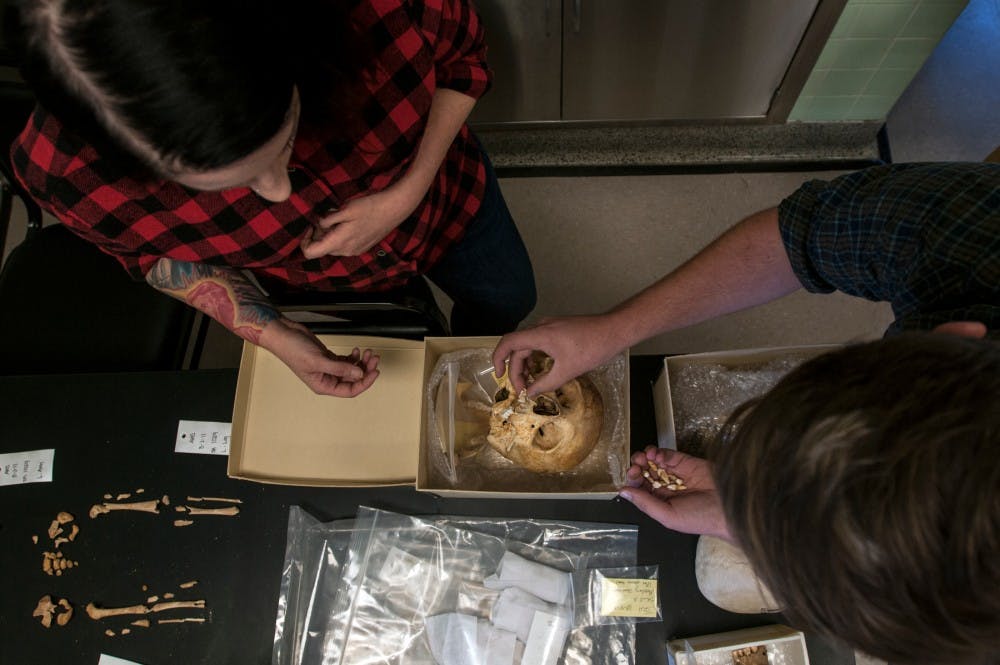Whether it’s bones from central Belize or cadaver remains, MSU’s bioarchaeology lab offers something off the beaten path for students who want a chance to explore anthropology.
Researchers from MSU travel to Belize every two years to excavate Mayan sites with the permission of the government of Belize, professor in the Department of Anthropology Amy Michael said. The remains are then transported to the bioarchaeology lab in Giltner Hall to be studied.
Undergraduate students can participate in the project through Fieldschool, an archaeological experience for undergraduate students. The programs, which last five to six weeks, takes place all over the world, including on MSU’s campus.
Anthropology and human biology senior Christiana Hench chose to go to the Belize field school to fulfill her methods requirement.
“We were able to dig up a lot of what’s in this lab right now,” Hench said.
Hench decided to continue working with the Mayan remains as a researcher at the bioarchaeology lab this semester.
She currently works to reconstruct remains from her Fieldschool experience, and recently began her own research as well.
Bones, Michael said, can tell researchers a lot about both the health and the culture of the deceased.
Occasionally, the lab is given remains of someone recently deceased by one of MSU’s medical schools, without information about the age or sex of the remains.
“We can test our forensic methods,” Michael said. “In forensic cases, bodies are often fragmentary.”
If given proper funding, Michael believes the lab can develop techniques to determine more information from a bone fragment than what is possible now.
Graduate student Jack Biggs works in the lab on a number of projects. He’s currently working on a regression equation that would allow researchers to determine skull shape from bone fragments, which can provide important context.
“We can give it a kind of cultural identity,” Biggs said of a hypothetical skull fragment.
Although there have been conflicts over control of human remains in the past, MSU’s bioarchaeology lab hasn’t had those problems, Michael said.

While the government of Belize officially owns the remains, researchers at MSU are permitted to keep them for now.
“They’re pretty safe here,” Michael said.
The excavations are about more than anthropological research, Michael said.
Finding the remains allows researchers to protect the skulls from the elements and looters as best as they can.
“What would be the point in digging people up if you’re not going to preserve them?” Michael said.
This kind of research can also help remind people the Mayan people still exist — they’re not just present in ancient ruins that no one touches, Michael said.
“You give, in a sense, some political agency back to the descendants,” she said.
The goal of the lab, Biggs said, is to “make the bones talk more than they do right now.”
While much of the bioarchaeology lab’s collection comes from excavations in central Belize, researchers won’t turn down other remains.
“People are like, ‘Oh, I don’t want to throw this away — can you use it?’ and we’re like, ‘Sure,’” Michael said.
The bones in this collection, called the comparative collection, could be anything from animal bones to trophy skulls from wars, Michael said.
The lab welcomes curious students who want to explore interests in physical anthropology, and the comparative collection works well for those testing the waters, Michael said.







